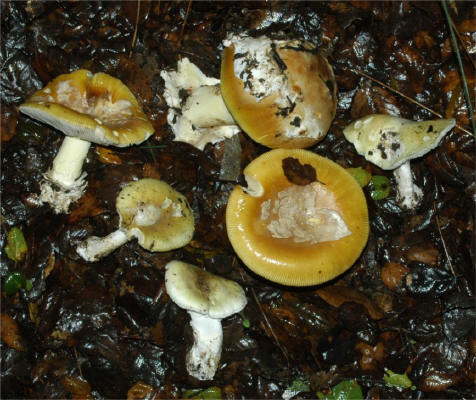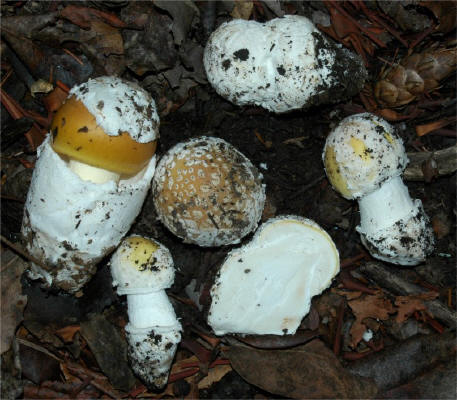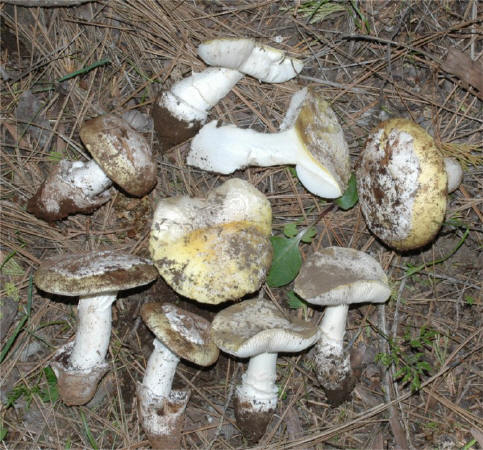 Friends
and foes -- the taxonomic stick can be ruthless upon
the wrong choice here...
Friends
and foes -- the taxonomic stick can be ruthless upon
the wrong choice here...While chasing Amanitas... Be mindful, they can strike back.
Mushroom hunters are well aware of the necessity to keep on the good side of taxonomy when chasing Amanitas, but it doesn't hurt to repeat that message now that we're at the height of the Coccoli harvest in the Bay Area.
In the Live Oak (Quercus agrifolia) and mixed woods of the Bay Area, Amanita lanei (Coccoli, Coccora) shares habitat with some far less human-friendly relatives, such as A. phalloides (DeathCap) and A. gemmata (Gemmed Amanita). One must not get complacent upon encountering a Coccoli patch because it can and is likely to be mixed. I have been constantly reminded of that when inspecting Amanita patches.
 Friends
and foes -- the taxonomic stick can be ruthless upon
the wrong choice here...
Friends
and foes -- the taxonomic stick can be ruthless upon
the wrong choice here...
Picking eggs or underdeveloped carpophores is where the risk of "pilot error" is
the greatest. While the eggs of
A. phalloides tend to have
entirely whitish content, the case of distinguishing against
A. gemmata
cannot be based on color alone. This is even more pronounced with the Sierra
Spring Coccoli, a much paler species than the coastal variation. Familiarization
with the overall stature and breaking pattern of the universal veil is
important. Even better, leave the eggs alone, let them grow -- you get more
mushroom, they drop their spores, it's a win-win situation.
 Coccoli and Gemmed
Amanita -- make your choice. Just be
careful.
Coccoli and Gemmed
Amanita -- make your choice. Just be
careful.
In the Sierra Nevada during Spring time, the two most common members of the Amanita family are A. aprica and A. lanei (Spring variation). A lanei is a favorite edible (also known as Spring Coccoli), while A. aprica is known to be dangerously toxic. Moreover, very frequently they grow side by side. Great care needs to be paid, particularly by inexperienced collectors when picking these for the table -- with a little experience it is not hard to distinguish them. A greater danger perhaps is simply growing complacent when the Spring coccoli offer an abundant bounty up for grabs. The key differentiating features are (1) the pattern of the breaking veil on the cap; (2) the different volva; and most of all (3) A. lanei has a pronounced odor that goes from spicy to strongly fishy over time.
 Choose your friends
-- Amanita lanei and Amanita aprica.
Choose your friends
-- Amanita lanei and Amanita aprica.